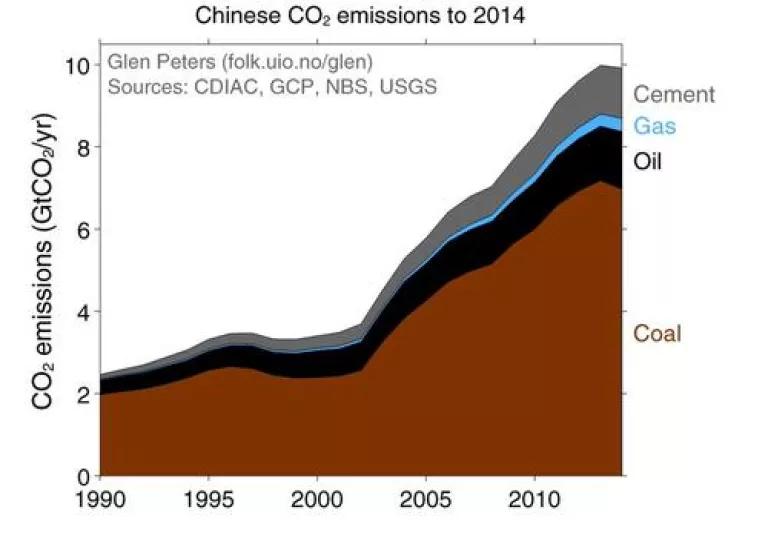
[Backyard in Datong with coal/Peter Van den Bossche]
Good news! China's coal consumption fell by 2.9 percent in 2014, the first drop in 14 years, according to official Chinese energy statistics released yesterday. Glen Peters of the Global Carbon Project calculates that China's CO2 emissions have also fallen, by 0.7 percent, for the first time this century. So contrary to grumbling in the U.S. Congress about the strength, or even existence, of China's climate commitments, it's clear that China's efforts to cut its coal consumption and carbon emissions are not only real, but are already producing results.

[Glenn Peters/Responding to Climate Change]
Here are three reasons why China is acting on climate change and air pollution:
- National War on Pollution: Much of the drop in China's coal consumption can be attributed to efforts to tackle the country's staggering air pollution. China's air pollution control action plan, adopted in September 2013, focuses heavily on cutting coal consumption in its three most polluted regions surrounding Beijing, Shanghai and Guangzhou. Some cities, including Beijing, are already starting to see some improvement in air quality, though the smog is still so bad that the mayor has declared the city "unlivable." Overall, the situation is still dire, as the air quality in 66 of China's 74 major cities failed to meet basic standards last year. As a result, we expect the pressure to intensify for China to move further away from its heavy reliance on coal.
- Renewable Energy: China is rapidly fulfilling its pledge to increase the share of renewable energy in its power mix to 15 percent by 2020. China led the world in renewable energy investment in 2014, boosting its investment from $56.3 billion in 2013 to a record $89.5 billion. This was equivalent to about 29 percent of all global investment in renewable energy in 2014, with the United States in second place with $51.8 billion in funding.
- China led the world in newly installed solar photovoltaic (PV) capacity last year, having added 10.6 GW of solar PV to the grid, about a quarter of all new global capacity. Solar PV capacity reached 28 GW at the end of 2014, rapidly catching up to world leader Germany's 38 GW, and China plans to add another 15 GW in 2015. Nearly one-fifth of the new solar panels were installed on the rooftops of individual households or companies.
- China also leads the world in installed wind power capacity, with 96 GW of grid-connected wind capacity at the end of 2014. The extent to which wind is being used to displace coal in China is vividly illustrated by yesterday's story in CleanTechnica: Wind has now become the second-largest source of electricity in Shanxi Province, one of China's most polluted provinces and the longtime center of China's coal industry.
- Much of this reduction has been achieved by shutting down highly polluting and inefficient factories, including 570 million tonnes of cement and 75 million tonnes of steel capacity over the past four years. China's market for energy efficient building technologies is also growing rapidly, which is extremely important, since half of the world's new building construction is expected to be built in China between now and 2030.
It is still too early to predict just how quickly China will phase out coal, though a number of analysts believe that China's coal use is very likely to peak before 2020. Yet as Joe Romm, a Senior Fellow at the Center for American Progress and the Founding Editor of Climate Progress, recently said, one thing is abundantly clear: "This reversal on coal utterly refutes the GOP claim that China's recent climate pledge with the United States 'requires the Chinese to do nothing at all for 16 years.'"
